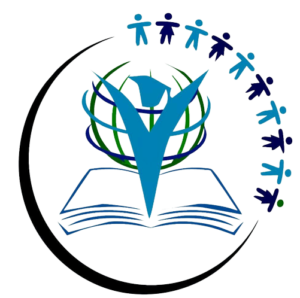Education is a fundamental human right, yet millions of girls around the world are denied access to it. For decades, the education of girls has been overlooked, especially in developing nations where cultural, economic, and social barriers hinder progress. However, girls’ education is not just a matter of fairness and equality; it is one of the most effective tools we have to drive social, economic, and political progress. Educating girls has the power to change the world, and investing in this cause can break cycles of poverty, foster development, and empower entire generations.
The Importance of Educating Girls
The benefits of girls’ education extend far beyond individual success. When girls are educated, it impacts their families, communities, and even entire nations. Here’s why investing in girls’ education is so crucial:
Breaking the Cycle of Poverty: Educated girls grow into educated women who are more likely to secure jobs, earn higher incomes, and support their families. Studies have shown that each additional year of schooling can increase a woman’s earning potential by 10-20%. This economic independence helps lift families and communities out of poverty.
Healthier Families and Communities: Educated women tend to marry later, have fewer children, and make informed decisions about their health and their family’s well-being. They are more likely to ensure that their children, especially girls, are also educated, thus creating a cycle of progress that extends across generations. Girls’ education reduces child mortality rates and improves the overall health of communities.
Social and Political Progress: Girls who receive an education are more likely to participate in political and social decision-making. Education empowers women to challenge harmful cultural practices, such as child marriage and gender-based violence. As a result, communities with higher levels of girls’ education experience more equality, reduced violence, and greater stability.
Economic Growth: Countries with a higher percentage of educated women tend to experience faster economic growth. Educated women contribute to the workforce, innovation, and entrepreneurship. By closing the gender education gap, nations can unlock untapped potential, boosting productivity and GDP.
Barriers to Girls’ Education
While the benefits of girls’ education are undeniable, millions of girls around the world are still denied this basic right. There are numerous barriers that prevent girls from attending school:
Cultural Norms and Gender Discrimination: In many societies, girls are still seen as less valuable than boys. Cultural norms often dictate that girls should focus on household chores or be married off at a young age, denying them the opportunity to pursue an education.
Poverty: Economic hardship is a major barrier to girls’ education. In low-income families, if resources are limited, boys’ education is often prioritized over girls’. Additionally, families may rely on girls’ labor at home or in the fields, preventing them from attending school.
Lack of Safe Schools: In many areas, schools are far from home, and the journey can be dangerous for girls. Safety concerns such as harassment, violence, or lack of separate sanitation facilities deter girls from continuing their education.
Child Marriage: Child marriage remains a significant barrier to girls’ education in many parts of the world. Once a girl is married, her education often ends, and her role is reduced to that of a wife and mother. According to UNICEF, girls who marry before the age of 18 are less likely to complete their education and more likely to experience domestic violence.
Conflict and Crisis: In regions affected by conflict or natural disasters, education is often disrupted, with girls being disproportionately affected. During crises, girls are more likely to be taken out of school to help with household tasks or to care for siblings.
The Role of NGOs in Promoting Girls’ Education
Non-governmental organizations (NGOs) play a crucial role in breaking down these barriers and ensuring that every girl has the opportunity to access education. Organizations like Education Lobby are on the front lines, working tirelessly to advocate for and implement programs that uplift and support girls in their educational journeys.
Education Lobby focuses on several key initiatives aimed at promoting girls’ education:
Scholarship Programs: Providing financial assistance to girls from low-income families ensures that they can continue their education without the burden of school fees, uniforms, and other costs that may be prohibitive for their families.
Advocacy for Policy Change: Education Lobby works closely with governments and communities to advocate for policies that promote girls’ education, such as free and compulsory education, ending child marriage, and protecting girls from violence in schools.
Safe Schools Initiative: The NGO ensures that schools are safe and welcoming for girls by providing separate sanitation facilities, promoting gender sensitivity training for teachers, and addressing issues of harassment and violence in and around school premises.
Community Awareness Programs: Engaging with local communities to change cultural attitudes and promote the importance of girls’ education is a critical part of the work. Education Lobby conducts awareness campaigns that emphasize the long-term benefits of educating girls, both for the individual and the community.
Mentorship and Role Models: Girls are more likely to succeed when they have role models to look up to. Education Lobby connects young girls with women who have successfully pursued their education and career, fostering inspiration and guidance for their future.
Success Stories: The Ripple Effect of Educating Girls
The impact of educating girls can be seen in success stories from around the world. Take the example of Malala Yousafzai, who survived an assassination attempt by the Taliban for advocating for girls’ education in Pakistan. Today, she is a global icon for girls’ education, demonstrating the power of knowledge and resilience.
Another inspiring story is that of Kakenya Ntaiya from Kenya, who fought cultural norms in her Maasai community to pursue education. She went on to become a teacher, and now she runs a school for girls, where she helps others break free from harmful practices like child marriage and female genital mutilation.
These examples are not isolated; they show the ripple effect that education can have. When one girl is empowered through education, she empowers her family, community, and ultimately, the world.
The Path Forward: A Shared Responsibility
Educating girls is not just the responsibility of governments or NGOs—it requires collective action from all parts of society, including families, communities, businesses, and individuals. When we educate girls, we are laying the foundation for a more just, equitable, and prosperous future.
How Can You Help?
Sponsor a Girl’s Education: Supporting a girl’s education through financial donations can make a lasting difference in her life and the lives of those around her.
Raise Awareness: Use your voice to advocate for girls’ education in your community, social circles, and on social media platforms.
Volunteer: Join organizations like Education Lobby in their efforts to break down barriers to education for girls in underserved communities.
Together, we can ensure that every girl has the opportunity to learn, grow, and fulfill her potential. Let’s educate girls today and empower generations to come.
Educating girls isn’t just an investment in the future—it’s an investment in a brighter, more equal, and thriving world. Let’s commit to making that future a reality by supporting girls’ education at every turn.



